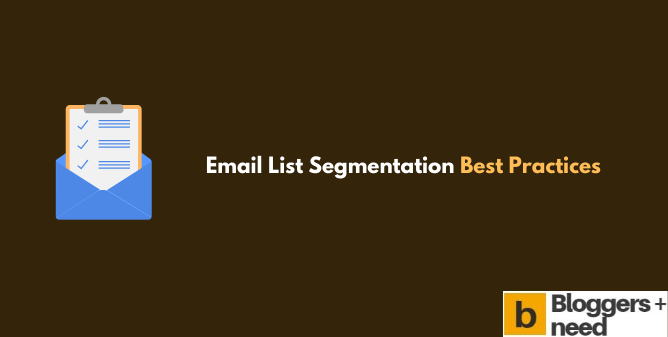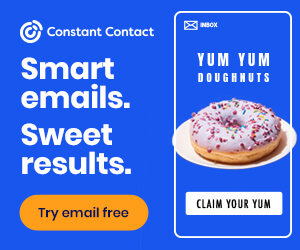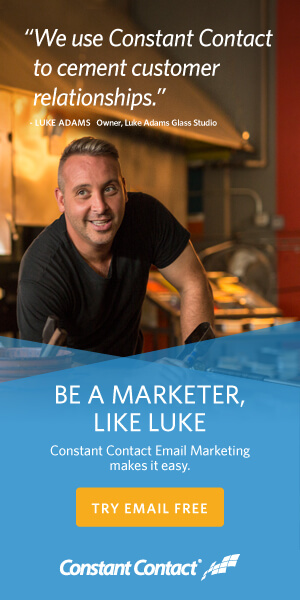
Here is the article about Email List Segmentation.
We have already presented newsletter or website registration, as well as online store purchases, as possible triggers for an automation chain above. But there are other creative ways to use email automation:
What are some email list segmentation ideas?
1. Segment by birthdays
Provided your customer has told you their birthday, they will receive a very personal birthday greeting by email once a year. To implement this automation chain, use the “Birthday” property from the recipient data, and always have the automation start with the current date.
2. Email Segmentation according to membership duration
A loyalty thank-you from a certain duration of registration on your site lends itself to a predefined newsletter. Here arises the chance to also contact members who have “fallen asleep” a bit and should be reactivated.
3. Recipient action in a mail
Depending on whether and what the recipient clicks on within the incoming mail, it triggers a new automation chain. If, for example, your mails remain unopened several times in a row despite discount promotions, you can safely remove the recipient in question from your list.
4. Customer location” segment
Are you an event and workshop organizer? Then you can offer your dates to targeted readers who live nearby. This segment can also be used in e-commerce: For example, offer product recommendations to match regional weather conditions!
5. Divide by language
Larger companies in particular benefit from serving different languages. Setting up separate English, French or Spanish newsletter sections for readers and customers who are abroad can make perfect sense. The respective content can also be designed differently for the countries.
6. Separate by interests
Are your readers more likely to click on newsletters that promise you valuable tips? Or are your recipients looking specifically for certain products or topics? Newsletters can be very well divided by interests with tags.
7. From purchasing to up-selling
Combine higher-priced products and services with additional services that you communicate to your customers in follow-up mailings. A good example of this is the offer of a matching cell phone cover for a new smartphone, or a discounted initial inspection when a new vehicle is purchased.
8. Special content for premium members
Advance information, exclusive offers or personal support 24 hours a day; customers who spend a certain amount with them or book a special rate can look forward to benefits in an exclusive newsletter section.
These are just a few examples of how you can segment your mailing list, but of course you can get creative yourself and tailor the email campaigns entirely to your offer. There are no limits to your imagination!
Depending on the characteristics of your readers, you can suitably pre-write your very own newsletter routes and send them out automatically. By the way: it is also possible to combine several routes. This way you can inform your readers even more comprehensively.
Practical examples for simple email automation
Now it’s getting concrete: we’ll show you different practical examples that illustrate the benefits of email automation for different industries. Because rest assured: automated mail is not only a practical tool in e-commerce to increase customer loyalty! Automated emails can also be used profitably in the service sector, in the pharmaceutical industry, in publishing or in tourism.
The welcome section
The simplest form of automation, which can be used for any sector and is actually already standard: autoresponder emails. When the customer takes certain actions, these are sent automatically, for example after the newsletter sign-up or registration. This is the perfect time to build a welcome route on top of it!
Setting the automation chain of a welcome route is quite simple and simply runs according to the principle “send newsletter, wait, send new newsletter”. In the example above, the recipient is introduced to the first steps through the digital service offer mail by mail. In the welcome section, all the features of your site, especially application tips and contact persons can be presented in individual mails.
There are always a few days between the individual newsletters so that the recipient does not feel overwhelmed and can’t take enough time for each step. With a concluding feedback mail, you can gauge whether your readers felt well received or whether they would like more information.
Regular newsletters by calendar days
You can serve holidays and birthdays well with mailings by calendar days. Once set up, these automated mails go to the recipient on time – giving them the feeling that you have thought of them alone.
Here’s how: set the starting point of your automation chain to “daily” and create a segment for birthdays from your recipient list. To do this, set the “Birthday” property of the recipient to match the current day. This way, all those contacts whose birthday is on the current day will be automatically written to on a daily basis.
You can also align your automated email marketing with special holidays. Take, for example, the popular Cyber Monday, which is based on Black Friday from the USA and is now mainly associated with special offers.
This is the perfect occasion for online retailers to connect with their customers! It can be advantageous to set the starting point of the automation chain a few days before the actual occasion, as this gives your customers the chance to have a look around the online store in advance and fill up their watch lists.
Then, just in time for Cyber Monday, you release the starting signal; a pre-scheduled newsletter directs the clientele to the online store, where tidy discounts beckon on this one day only. Similar offers can, of course, also be sent out by service providers to build customer loyalty.
If you don’t offer products or a service, but pure content, you can also promote this through an email stretch by calendar entry. Be it blogs, online magazines, or content accumulation services (such as Buzzfeed or Bloglovin’), you can attract potential readers to your site with a pre-scheduled newsletter route.
For example, once a week you can automatically send out a newsletter with teasers for the latest posts on the site, or highlight the most popular posts. Sending to different email list segments can also be useful in this context; if you have been able to assign different interests to your readership with the help of tags, you can send out differentiated newsletter content based on this.
As described above, it makes sense to link further automation chains to these event-related email routes. This can also help you keep discount hunters close to your offer, or possibly get readers excited about content they wouldn’t have discovered otherwise.
Automatic emails after purchase
A typical use case of automation for anyone running an online store; the starting point of this newsletter route is the purchase of a product. After your customer has actually made a purchase, an automated route of this type would be conceivable.
As already described above, you can upsell based on your customers’ orders, i.e. offer further products that match the previous order (“You might also be interested in this”). It is best to wait a few days with this further offer so that the first order can also reach its recipient beforehand.
Complex workflows in email automation
Simple automation chains can be quickly implemented even by beginners. However, to respond even more individually to the behavior and interests of your recipients, you can implement complex workflows.
As described above, there are some tools that allow you to quickly implement more complex workflows in your automation chains. What sounds complicated at first becomes clearer when visualized in the form of a flowchart. As an example of a multi-stage automation chain, let’s again look at an email route that starts with a purchase in the online store:
In this example, it is clear that the complex automation starts at the moment when customers react differently to your emails (marked by the heart icon). Depending on the recipient’s action, a property is assigned to the contact (marked by the pencil icon).
According to the user behavior, two new “branches” are then formed in the automation chain; one starts as soon as the customer opens the received email. The second branch sends other messages to those who leave the email unopened, for example, special discounts to attract customers to your online store.
After that, it evaluates again: does the recipient open the email, and maybe even click on a link? Then a note is again stored at the respective address that this recipient is interested in your emails. All other addresses are sorted out of the recipient list.
This way, you ensure that you only send emails to all those contacts who are really interested in your offer. Recipients who do not open your emails can alternatively be polled with special newsletters to check whether there is still interest in the newsletter in general – for example, with a short survey on interest in terms of content or the input option to reduce the delivery volume of the newsletter.
Interest-based newsletters
What about implementing interest-based automation routes? To send your content according to the inclinations of your readers, you can use the filter function with the help of an if/then rule.
In this case, newsletters with different content are sent out regularly and at the same time. The filter function helps to automatically send content only to those recipients in whom they are interested. Again, tags help you with this. With tags you assign your recipients their interests, e.g. “shoes”, “equestrian sports”, “ball sports”, “travel” and so on. Anything is possible, you can flexibly tag interests and attributes matching your offer to the recipients:
In the practical example, we are guided by content that might be sent by an online magazine. Depending on the department, a separate newsletter is sent. Does the department match the interest, i.e. the day of the recipient? Then the recipient will receive the corresponding newsletter. If none of the sections matches the interests of the recipient, he/she will automatically receive a newsletter informing him/her about the news on your website in general.
Who else can benefit from automated newsletters?
Anyone who does newsletter marketing can benefit from the advantages of automation. In addition to the practical examples described in detail above, other scenarios are possible:
- Non-profit organizations can use automation to ease their busy workday and alert members to events, fundraisers and successes via email
- Tour operators can offer customized tours and discounts based on customers’ residences and interests
- Dermatologists who send exclusive discounts to their regular customers via newsletter for wrinkle treatment and refer them to theme nights
- Technology vendors who promote specific features and support offerings of their software or point to updates and changes
- A dog training school compiles articles on dog training, highlighting new courses with early bird discounts
- A hair salon offers its recipients a discount or free service at their next appointment, such as eyebrow plucking
Fixing problems in email automation
Especially in the beginning, newcomers to newsletter automation can run into some inconsistencies in the chain, which can lead to the stop of the sendings. However, these are often quickly fixed:
- Automation has no starting point: every automation needs a starting point. For this, the newsletter sign-up, an order process or calendar days are suitable as starting points. Make sure that the starting point is always linked to an action (e.g. a newsletter mailing).
- The automation chain is not active: The automation is not yet activated after the chain has been created to allow you to fine-tune the content and processes. Once you are satisfied with the automation chain, you just need to activate it manually.
- The logic of the campaign is not right: the modules in the chain you have created are not related to each other in terms of content, or are aimed at the wrong segments. Go through your automation chain step by step to make sure that all modules logically build on each other.
Email List Segmentation: Conclusion
Email List Segmentation can make your day-to-day work easier. Even simple, short newsletter segments can be quickly implemented in automation programs, even for email marketing beginners.
Automation saves you a lot of effort in direct communication with your customers, increases efficiency at the same time and can strengthen customer loyalty through pre-planned newsletters.
Affiliate Disclosure: Some of the links in this post are affiliate links, which means I may earn a small commission if you make a purchase through those links. This comes at no extra cost to you. Thank you for your support!


Hey Abdullah premm, thanks for sharing this list and tips. it was really helpful
Hello Abdullah,
Thanks for providing such an great email list segmentation, i have a question regarding lead form, while collecting the email data i only collect name and email, one of a blogger advice to me form field should be small, do i need to add dob field?
Yes you need to aks that data.